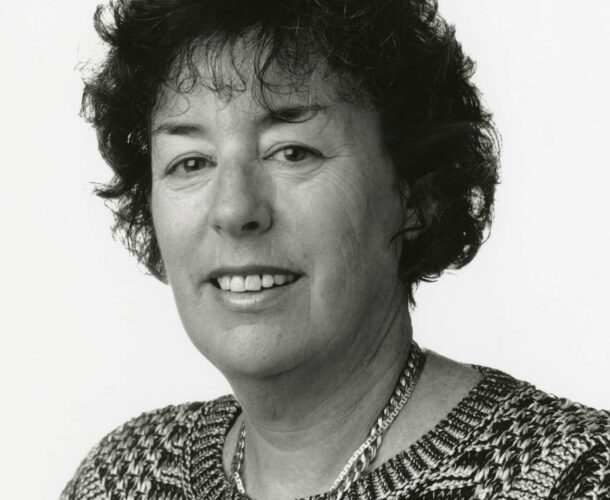An international upbringing
Dr Ora Bernard has her Francophone mother to thank for a 30-year career at the Walter and Eliza Hall Institute and a marriage that’s nudging half a century. Her mother migrated from Poland to France before the Second World War, later shifting to Israel where she met and married Bernard’s father, also a Polish Jew who had managed to evade the Holocaust.
“My mother went to Israel because she was a Zionist,” Bernard explains. “But she always loved France, always talked about France.”
So having completed a Masters of Science at Tel Aviv University— her passion for science ignited with her first dissection in primary school—Ora was inspired to work in Paris. She obtained a position in the lab of immunologist and future Nobel laureate, Jean Dausset. And that’s how in 1968 Ora came to be at the first International Congress of the Transplantation Society in Paris where she met two men who had a defining influence on her life.
The first was fellow scientist Claude Bernard, who she ended up marrying. The second was the future director of the Walter and Eliza Hall Institute, Sir Gus Nossal, who helped pave her somewhat circuitous way to the Melbourne.
First role at the institute
After a four-and-a-half year stint in Montreal, where Bernard obtained a PhD in biochemistry, the couple shifted to Melbourne in 1974. Claude went to the Walter and Eliza Hall Institute, Ora Bernard to Melbourne University’s microbiology department on a postdoc fellowship. But finding the job “boring,” she met with the institute’s own husband-and-wife team Drs Suzanne Cory and Jerry Adams who welcomed her into the fold.
She only stayed three-and-half years, before an extended stint at Switzerland’s Basel Institute for Immunology where she worked alongside Susumu Tonegawa, another future Nobel laureate.
“The work I did for him impressed Gus Nossal so much he offered me a job at WEHI again,” she recalls. And the Bernards and their two children were happy to return to the antipodes; the European schools were too strict for them, and they hadn’t been able to see their relatives in Israel and France as often as they had hoped. This time Bernard stayed at the institute for 26 years.
Discoveries in oncogenes
The late ‘70s was an exciting era in molecular biology and Bernard’s expertise in DNA sequencing placed her at the forefront.
“Back then it was very laborious work, with a high radioactive risk because you had to tag the DNA with radio isotopes. But I had the technique in my hands.”
She was involved in the discovery of oncogenes, genes that have the potential to cause cancer, and of a gene involved in lymphoma. Most significant was her discovery of a gene that regulates the molecule actin, “the cell’s backbone,” vital for cell division, movement and signalling.
“We showed that this gene is very important in the spread of cancer because it’s actin that makes the cancer cells move— from the primary tumour to the blood stream and then to different organs. So when the regulation of actin goes wrong, the cancer cells can move faster and invade other organs.”
Her enduring challenge is to find a compound that will bind to the protein encoded by the gene and switch it off, so that the cancer stops spreading. “But we couldn’t find a compound that was potent enough— this is still at the experimental stage.”
Reflections on scientific and institute life
As always, the challenge is to secure funding for her research— a task that has become more difficult over time.
“During my first 15 years at the institute I didn’t have to write grants because we were block funded by The National Health and Medical Research Council. Now people are spending three-quarters of their time writing grant applications and very few grant applications to the NHMRC are going to be funded. That’s time that could be spent being in the lab and mentoring the younger scientists.”
Ora has fond memories of the institute during the 1990s when “it was still small, intimate, we knew everybody. And Gus [Nossal] wanted everyone to be happy— he said, ‘do your science; but be happy.’ ”
But then, the institute started to grow— a fact she reflects upon with her characteristic Mediterranean candour.
“We’d moved to the new building on Royal Parade and then people started talking about moving to an even bigger one—and that really frightened me.”
Recent research
Eight years ago Bernard left an ever-expanding Walter and Eliza Hall Institute for St Vincent’s Medical Research Institute where she continued her work on the gene that regulates actin. She found that the gene plays a role in causing resistance to chemotherapy in children suffering from the deadly cancer, neuroblastoma— one of the most common childhood cancers.
Now in semi-retirement, Bernard maintains her links with her mother’s beloved France where she collaborates with another research institute on developing a drug that will block the gene that she helped discover.



